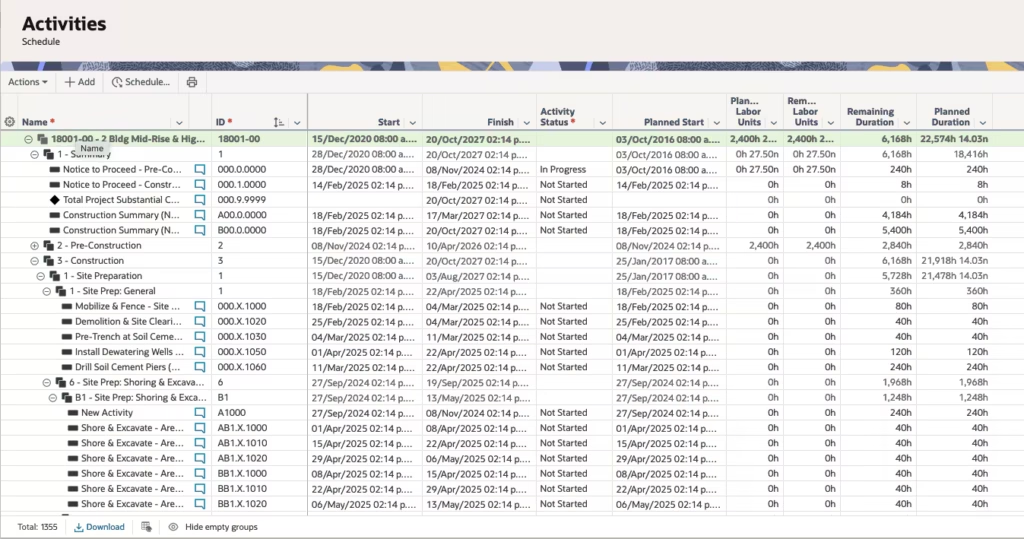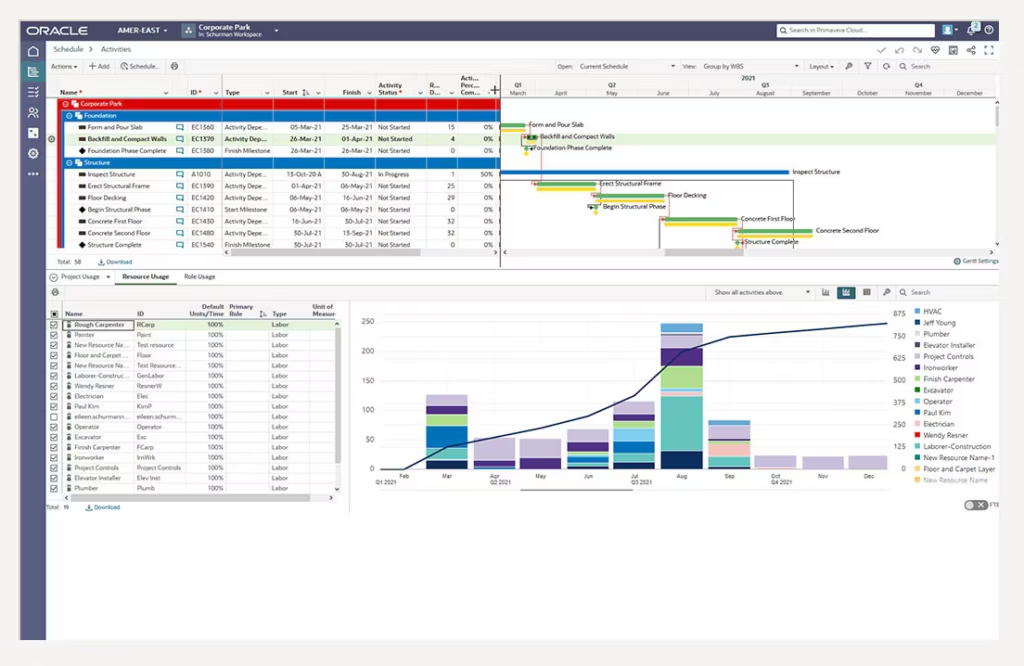
Switching to a new project management platform raises many questions. Oracle Primavera Cloud (OPC) is the cloud-based successor to the well-known Primavera P6 planning tool. More and more organizations that work with Primavera P6 are considering the switch to OPC because of the clear advantages in terms of costs, accessibility and collaboration. But what do you need to think about when you take this step? In this knowledge article, we discuss the most important points to consider for a smooth transition. We will discuss the benefits of OPC, essential OPC modules to get started with, how quickly teams can get started with OPC, how to get the team on board, and transferring current projects to the new environment.
Choosing Oracle Primavera Cloud offers various advantages over traditional on-premise solutions such as Primavera P6. Some important advantages at a glance:
Oracle Primavera Cloud is an extensive suite with various modules (such as planning, risk management, resource & cost management, portfolio management and Lean planning). To get off to a solid start, it is wise to focus on the basics: planning and project management.

In practice, this means starting with the Scheduling module for drawing up project plans, monitoring progress and managing projects. These components cover the core functionality you are familiar with from Primavera P6: planning activities, allocating resources and monitoring milestones and deadlines. By first mastering this essential module, you will lay a solid foundation. Later you can gradually expand with additional modules, such as the Risk, Task or Costs and Funds module, as soon as the team is ready. This way, the transition remains clear and you avoid users becoming overwhelmed by too many new features at once.

A frequently asked question when switching to new software is how steep the learning curve is and how quickly teams can be productive. Fortunately, OPC has been designed with a modern, user-friendly interface. Many users find the system more intuitive than the old Primavera P6. This means that the training time required can be shorter. With targeted training and guidance, planners, cost controllers, risk managers or other members of the project management team can often master the basics within a few days.
Because OPC is cloud-based, you also don’t have to spend time on technical installations at each workstation. As soon as the environment has been set up and the user accounts have been created, the team can start entering projects and data almost immediately. In practice, you see small project teams switching completely to OPC within a few weeks. Larger organizations take a little more time for a phased implementation – think one to three months – so that everyone becomes familiar with the system and any adjustments to processes can be implemented gradually. It is important to offer sufficient support and opportunities for practice during that period, so that the team builds confidence in the new way of working.
Introducing a new tool is not only a technical change, but also a human one. Creating support among all users is crucial for success. Some tips to get your team excited and involved in the transition:
By paying attention to change management and the various interests of users, you can ensure a smooth transition. Ultimately, employees want to know how OPC helps them in their daily work – show them that, and you will find that adoption goes a lot more smoothly.
What if you are halfway through a project and decide to switch to OPC? Fortunately, transferring ongoing projects does not have to be too difficult, provided you prepare well. A few points to consider:
Data migration – Oracle Primavera Cloud offers options for importing existing Primavera P6 projects (for example via .xer export files). This means you do not have to start from scratch with current projects. It is important to thoroughly check the data after the import. Consider the planning, resources, relationships between tasks and any baseline or progress information. An analytical eye is useful here: is all the data correct and do the reports in OPC match what you were used to? By trying out test projects, you can build confidence that the migration will go smoothly before you transfer critical projects.
Integration – Had you linked Primavera P6 to other systems (such as an ERP system for budgets or a time-logging system)? Then you will have to redesign these integrations for OPC. The good news is that OPC has modern links (APIs), which generally makes technical integration easier than with the old environment. Plan enough time to test and refine all the links so that all the systems continue to work together without any loss of data or delays.
Challenges and points for attention – Keep in mind that OPC is not one-to-one identical to P6. Certain functions work slightly differently or have been improved in OPC. It may take some time for the team to familiarize itself with the new method in ongoing projects. Therefore, consider whether it makes sense to switch in the middle of a critical project, or whether it is better to wait until a project phase has been completed. An alternative is to set up the current project in parallel in OPC (shadow project) and to keep track of both for a while, so that the team can get used to it before switching completely. With a progressive but well-considered approach, you can manage the transition of existing projects without too many hitches.
A successful transition to OPC requires not only new tools, but also a new mindset. BAEKEN supports you during this process by training your team, optimizing workflows and seamlessly integrating OPC into your organization. With a data-driven and innovative approach, we ensure that your projects are managed more efficiently and effectively. Curious about how we can help you utilize OPC to its fullest potential? Contact us and discover the possibilities.
Want to know more about this topic?